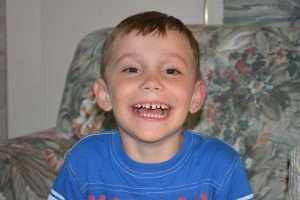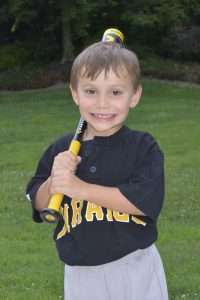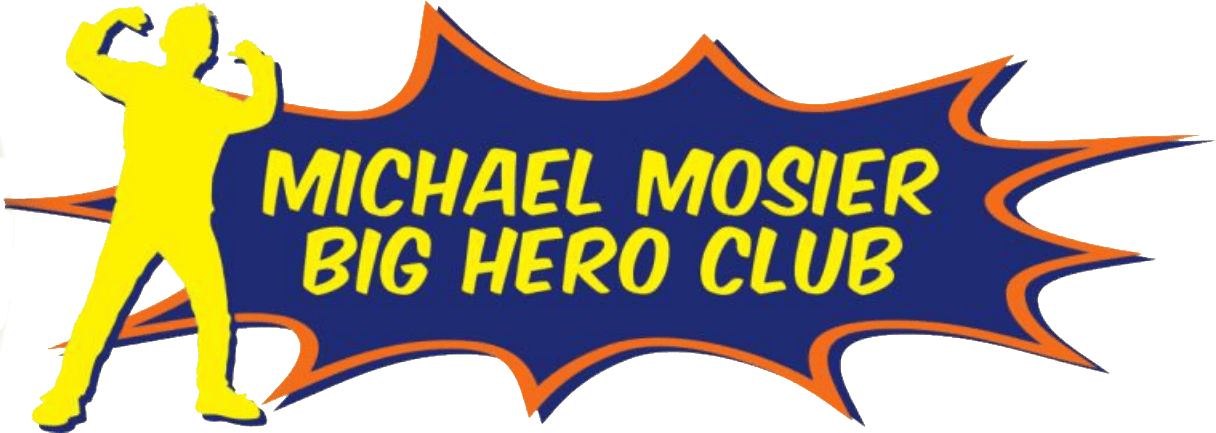 On September 4, 2014, Michael was diagnosed with a tumor in his brain stem called a diffuse intrinsic pontine glioma (DIPG). Michael was an active and energetic little boy with a thirst for learning. He had a huge smile that would light up a room. He was the special kind of kid who equally enjoyed baseball and art projects, playing in the mud and doing puzzles, wrestling and board games. Michael loved playing with his little sister, Lila. He had an incredible memory, and if you doubted him . . . you would usually be wrong. He was confident and had no reservations about getting up in front of a crowd to be the center of attention or being the aggressive baseball player to go after the ball even if he was the smallest on the field. But he was also extremely kind, and we were so proud that he would make friends with everyone in his classes. And, from birth, he loved the color yellow.
On September 4, 2014, Michael was diagnosed with a tumor in his brain stem called a diffuse intrinsic pontine glioma (DIPG). Michael was an active and energetic little boy with a thirst for learning. He had a huge smile that would light up a room. He was the special kind of kid who equally enjoyed baseball and art projects, playing in the mud and doing puzzles, wrestling and board games. Michael loved playing with his little sister, Lila. He had an incredible memory, and if you doubted him . . . you would usually be wrong. He was confident and had no reservations about getting up in front of a crowd to be the center of attention or being the aggressive baseball player to go after the ball even if he was the smallest on the field. But he was also extremely kind, and we were so proud that he would make friends with everyone in his classes. And, from birth, he loved the color yellow.
A week after Michael’s 6th birthday and his 1st day of kindergarten, Michael suddenly began complaining of double vision, and his right eye stopped moving and blinking normally. An MRI brought the tragic news that Michael had a tumor in his brainstem. While we hoped Michael had a more treatable tumor, a biopsy ultimately confirmed that Michael had DIPG: “Terminal upon diagnosis,” “Zero survival,” “No effective treatments,” and “No cure.” Less than two weeks earlier, Michael had been jumping off the diving board and swimming. He had just been bouncing across the trampolines with his friends and family at Sky Zone for his 6th birthday. It literally did not seem possible that this was happening to our little boy.
 The neuro-oncology team at Children’s National Medical Center in Washington, DC, led Michael’s treatment. Michael mustered the energy to go to school each morning before going to NIH each afternoon to complete 30 radiation treatments. He concurrently took an experimental chemotherapy drug meant to enhance the effects of the radiation.
The neuro-oncology team at Children’s National Medical Center in Washington, DC, led Michael’s treatment. Michael mustered the energy to go to school each morning before going to NIH each afternoon to complete 30 radiation treatments. He concurrently took an experimental chemotherapy drug meant to enhance the effects of the radiation.
The vast majority of kids get temporary symptomatic relief from radiation, but Michael’s symptoms unfortunately continued to worsen. Just weeks after his diagnosis, Michael began using a wheelchair, lost the ability to use his left (and dominant) hand, had difficulty speaking, and would often get nauseated and vomit due to pressure from the tumor. In addition, the steroids that Michael took to counteract the inflammation in his brain had their own troublesome side effects, including rapid and significant weight gain and sleeplessness. After radiation ended, Michael continued on a course of experimental chemotherapy that was administered for 5 days every 28 days.
 During Michael’s illness, he created a “to do list” every day. It included a wide variety of items he wanted to accomplish, from doing Legos, to going to school, to drinking a milkshake. He insisted that the list had to be finished before he would go to sleep at night. Michael rarely complained during an unbelievably difficult 8 ½ months. Instead of dwelling on all he had lost, Michael adapted by looking for new activities he could enjoy. Even in his last days of life, when he could no longer eat, speak, or move, Michael wanted his teacher to come to the house to go over his school lessons.
During Michael’s illness, he created a “to do list” every day. It included a wide variety of items he wanted to accomplish, from doing Legos, to going to school, to drinking a milkshake. He insisted that the list had to be finished before he would go to sleep at night. Michael rarely complained during an unbelievably difficult 8 ½ months. Instead of dwelling on all he had lost, Michael adapted by looking for new activities he could enjoy. Even in his last days of life, when he could no longer eat, speak, or move, Michael wanted his teacher to come to the house to go over his school lessons.
We took our cues from Michael, and if he was not sitting around feeling sorry for himself, we figured we should not be either. So, we planned our days and did essentially any project, outing, or activity Michael wanted to do that would bring him a smile. We threw Michael a Big Hero 6 Movie Night Half Birthday Party when Michael turned six and a half. It is an unbelievable experience to try to happily celebrate your child’s half birthday, knowing that you may not see his next actual one.
Michael inspired countless others to dig deep, overcome obstacles, and live life to the fullest. His efforts raised over $119,000 for pediatric brain tumor research for the Race for Hope – DC, and his Team Big Hero Michael was recognized as the top fundraising team for the event. Michael was able to generate donations from people in all 50 states and in over 60 countries across the world, showing that even a 6-year-old boy can make a big impact. Domestic and international news outlets told Michael’s story, including Huffington Post, Headline News, and the Daily Mirror.
 Michael passed away on May 17, 2015, after a heroic battle, and he is remembered and missed greatly each and every day. Michael’s tumor tissue was donated to medical research, with hopes that it can be used for more medical breakthroughs and progress.
Michael passed away on May 17, 2015, after a heroic battle, and he is remembered and missed greatly each and every day. Michael’s tumor tissue was donated to medical research, with hopes that it can be used for more medical breakthroughs and progress.
Following Michael’s passing, his parents Mark and Jenny Mosier created Michael Mosier Defeat DIPG Foundation in his honor. The Foundation focused on finding a cure for DIPG through funding of innovative research. Inspired by Michael’s perseverance, courage and determination, the Mosiers worked to complete the final item on Michael’s checklist: Defeat DIPG. In less than 6 years, Michael Mosier Defeat DIPG Foundation raised over $8.45 million for DIPG research and brought together families across the country.
Starting in 2017, Michael Mosier Defeat DIPG Foundation worked in partnership with The ChadTough Foundation to fund game-changing DIPG projects through their joint research grant program. By unifying as one organization, the Mosiers believe this will take their shared mission to the next level and expedite progress towards a cure. Together, we will Defeat DIPG.



